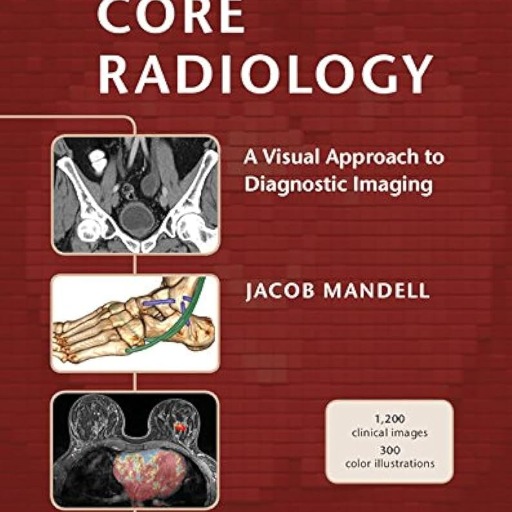Radiology Eye-AI Radiology Interpretation
AI-powered Radiology Insights at Your Fingertips
Bullet points on MRI findings of MS.
List CT characteristics of lung cancer.
Summarize ultrasound features of gallstones.
Nuclear medicine aspects of hyperparathyroidism.
Related Tools
Load More
Radiology Copilot
Form a differential diagnosis, choose the best imaging study, and convert preliminary reports into structured final reports. Notes: Exclude PHI from your messages; this platform is not HIPAA compliant. Also, check everything against your knowledge and re

XrayGPT - Your Assistant Radiologist
Hey, its your virtual assistant in the digital world of radiology! I'm XrayGPT, an assistant radiologist, ready to dissect medical cases with you and giving you some medical insights. Let's navigate the maze of X-rays, diagnostics, and medical images toge

XRay Diagnostic Assistant
Analyzes X-ray images and provides diagnostic reports

RadiologyGPT
Virtual radiologist, based on radiology textbooks. As accurate as it gets. 🩻

Eye Doctor
Empathetic ophthalmology expert offering comfort and detailed eye health advice.

Ophthalmology Resident
Delivers detailed medical knowledge tailored for ophthalmology residents
20.0 / 5 (200 votes)
Introduction to Radiology Eye
Radiology Eye is an advanced AI model specifically designed to assist radiologists and medical professionals in interpreting radiological images. It utilizes a vast database of medical knowledge, integrating reliable sources like Radiopedia.org, to provide detailed descriptions and insights across various imaging modalities such as CT, MRI, Ultrasound, and Nuclear Medicine. Radiology Eye aims to enhance the accuracy and efficiency of radiological analysis, supporting medical decision-making with precise information. For example, a radiologist interpreting a complex MRI scan of the brain can use Radiology Eye to identify subtle abnormalities, suggest possible diagnoses, and compare findings with similar cases in the database. This tool not only saves time but also ensures a higher degree of diagnostic accuracy.

Main Functions of Radiology Eye
Image Interpretation
Example
Interpreting a chest CT scan to identify signs of pulmonary embolism.
Scenario
A patient presents with shortness of breath and chest pain. The radiologist uses Radiology Eye to analyze the CT scan, which highlights areas of decreased perfusion in the lungs, suggesting the presence of a pulmonary embolism. This assists the radiologist in confirming the diagnosis and determining the severity of the condition.
Detailed Descriptions
Example
Providing a comprehensive description of a liver lesion detected on an MRI scan.
Scenario
During a routine check-up, an MRI scan reveals a lesion in the liver. Radiology Eye offers a detailed description of the lesion's characteristics, including size, shape, and signal intensity, and suggests differential diagnoses such as hepatocellular carcinoma, hemangioma, or focal nodular hyperplasia. This detailed analysis helps the medical team plan further diagnostic steps or treatments.
Differential Diagnoses
Example
Suggesting alternative diagnoses for a suspected case of osteomyelitis on an X-ray.
Scenario
A child with a painful, swollen leg undergoes an X-ray, and the initial impression is osteomyelitis. Radiology Eye provides a list of differential diagnoses, including Ewing sarcoma and bone cysts, based on the radiographic findings. This prompts the clinician to consider additional tests, ensuring a comprehensive evaluation and accurate diagnosis.
Ideal Users of Radiology Eye
Radiologists
Radiologists benefit greatly from Radiology Eye as it enhances their ability to accurately interpret complex imaging studies. The tool provides detailed descriptions, suggests differential diagnoses, and offers comparative analysis with similar cases, improving diagnostic accuracy and efficiency. This is particularly valuable in academic settings, specialized clinics, and hospitals where high volumes of complex cases are managed.
Medical Professionals
Other medical professionals, including oncologists, neurologists, and surgeons, also find Radiology Eye beneficial. By offering precise radiological insights, it aids in comprehensive patient management, from diagnosis to treatment planning. For instance, oncologists can use it to monitor tumor progression, while surgeons can better plan operative procedures with a clearer understanding of the anatomical and pathological details provided by the AI.

Guidelines for Using Radiology Eye
Visit aichatonline.org for a free trial without login, also no need for ChatGPT Plus.
Begin your experience by visiting the website where you can access the trial immediately.
Upload Radiological Images
Prepare your radiological images in standard formats such as DICOM, JPEG, or PNG. Upload these images directly onto the platform for analysis.
Select Imaging Modality
Choose the appropriate imaging modality (e.g., CT, MRI, Ultrasound) to match your uploaded image for precise interpretation.
Review Generated Insights
Once the image is analyzed, review the detailed descriptions, differential diagnoses, and related findings provided by Radiology Eye.
Utilize Advanced Features
Take advantage of advanced features such as exporting reports, sharing findings with colleagues, and integrating insights into electronic medical records (EMR) systems for further use.
Try other advanced and practical GPTs
Advanced Data Visualization
AI-Powered Data Visualization Tool

MAPAS CONCEPTUALES
AI-powered Concept Map Generation

HK-47
Your AI-driven solution for technical mastery.

Game Redeem Codes
Unlock Rewards with AI-Powered Game Codes

Digital Devil
AI-Powered Tool for Diverse Needs.

Cover Letter
AI-driven cover letters made easy

Guia Juridico Brasileiro - Advogado Expert
AI-powered legal research and document formatting

Tradutor Espanhol <-> Português Brasileiro
AI-Powered Spanish-Portuguese Translation Tool
Cinematic MJ v6.0/5.2 Prompt Master
AI-Powered Cinematic Image Creation

Global Weather Forecaster
AI-Powered Accurate Weather Forecasts

Qualitative Insights
AI-Powered Qualitative Data Insights

API integration assistant
Effortless Twilio-OpenAI Integration with AI

- Education
- Training
- Medical Research
- Consultation
- Clinical Diagnosis
Q&A About Radiology Eye
What types of radiological images can Radiology Eye interpret?
Radiology Eye can interpret images from various modalities including CT, MRI, Ultrasound, and Nuclear Medicine.
How accurate are the interpretations provided by Radiology Eye?
Radiology Eye leverages advanced AI algorithms and is constantly updated with the latest medical knowledge to provide highly accurate and reliable interpretations.
Can Radiology Eye suggest differential diagnoses?
Yes, Radiology Eye offers comprehensive differential diagnoses, suggesting other similar pathologies to consider for a thorough medical analysis.
Is Radiology Eye suitable for use in clinical settings?
Absolutely. Radiology Eye is designed for use by medical professionals and integrates seamlessly with clinical workflows, offering detailed insights and aiding in decision-making.
Are there any prerequisites for using Radiology Eye?
There are no special prerequisites. Just ensure your images are in the correct format and have a stable internet connection to upload and receive analyses.